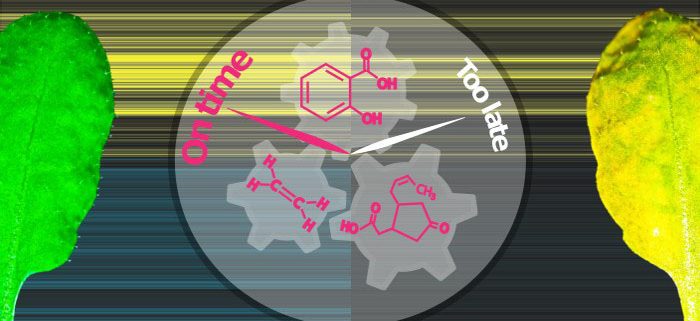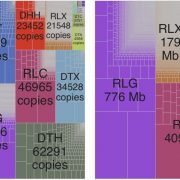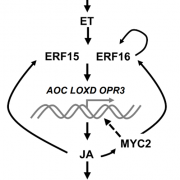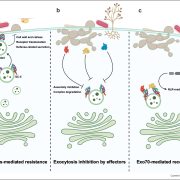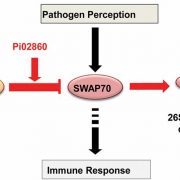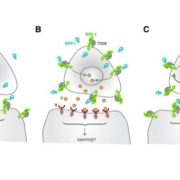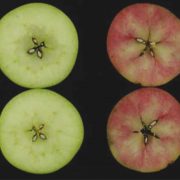Defense or Disease: It’s a Matter of Timing
Mine et al. use RNA-seq to study RPS2-mediated bacterial resistance https://doi.org/10.1105/tpc.17.00970
By Akira Mine, Carolin Seyfferth and Kenichi Tsuda
Background: To fight against pathogens, plants can detect enemies and transduce the signal to reprogram gene expression in the cell as a defense mechanism. Plant resistance genes, typically encoding immune receptor proteins for pathogen surveillance, have been practically used in breeding to deliver disease resistant plant cultivars to agricultural fields. Understanding how plant resistance genes confer pathogen resistance would open up a new avenue of plant protection. Phytohormones such as jasmonate (JA), ethylene (ET), and salicylic acid (SA) are chemicals that are produced within plants upon pathogen attack and regulate cellular processes, including gene expression, that mediate plant disease resistance.
Question: We previously showed that simultaneous removal of JA, ET, SA, and the signaling component PAD4 abolishes bacterial resistance conferred by the resistance gene RPS2 in Arabidopsis thaliana. This finding prompted us to explore how these signaling components act together to mediate RPS2-mediated bacterial resistance at the transcriptional level.
Findings: We employed RNA-sequencing technology to monitor genome-wide gene expression dynamics in Arabidopsis leaves after challenge with a bacterial pathogen that activates RPS2. Resistant wild-type plants reprogrammed expression of over 7000 genes within 4 to 6 h after pathogen challenge and maintained this gene expression pattern later on. Surprisingly, susceptible plants, in which JA, ET, SA, and PAD4 were simultaneously removed, showed almost identical gene expression pattern as resistant wild-type plants but with a several hour delay. Thus, JA, ET, SA, and PAD4 together set up timely reprogramming of gene expression within the early time window, which matters in RPS2-mediated bacterial resistance.
Next steps: Plant diseases caused by pathogens are serious threats to global food security. We seek to find out how rapid reprogramming of gene expression is regulated and translated to effective defense, which would pave the way for development of new plant protection strategies.
Akira Mine, Carolin Seyfferth, Barbara Kracher, Matthias L Berens, Dieter Becker, Kenichi Tsuda (2018). The Defense Phytohormone Signaling Network Enables Rapid, High-amplitude Transcriptional Reprogramming During Effector-Triggered Immunity. Published May 2018. DOI: https://doi.org/10.1105/tpc.17.00970
Keywords: Plant Defense, Phytohormone, Gene Regulatory Network


